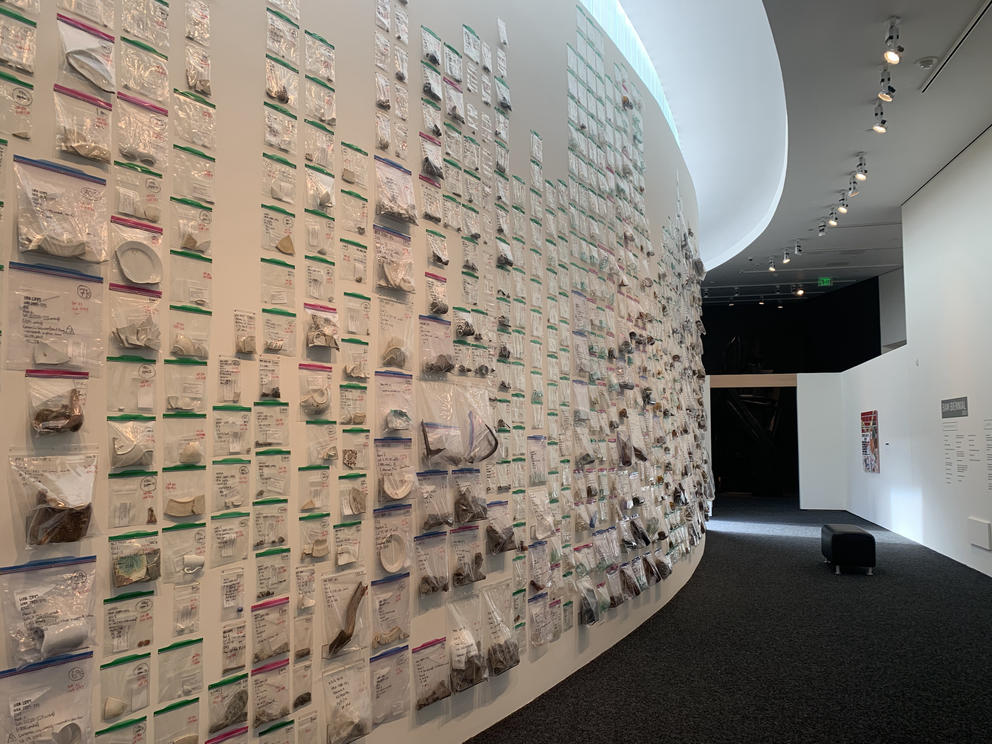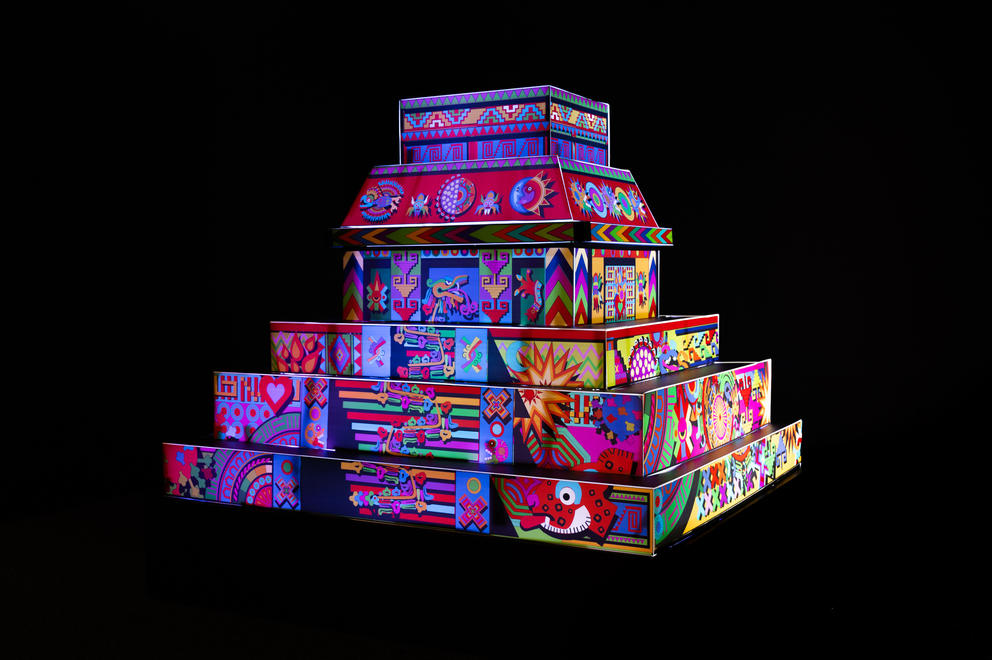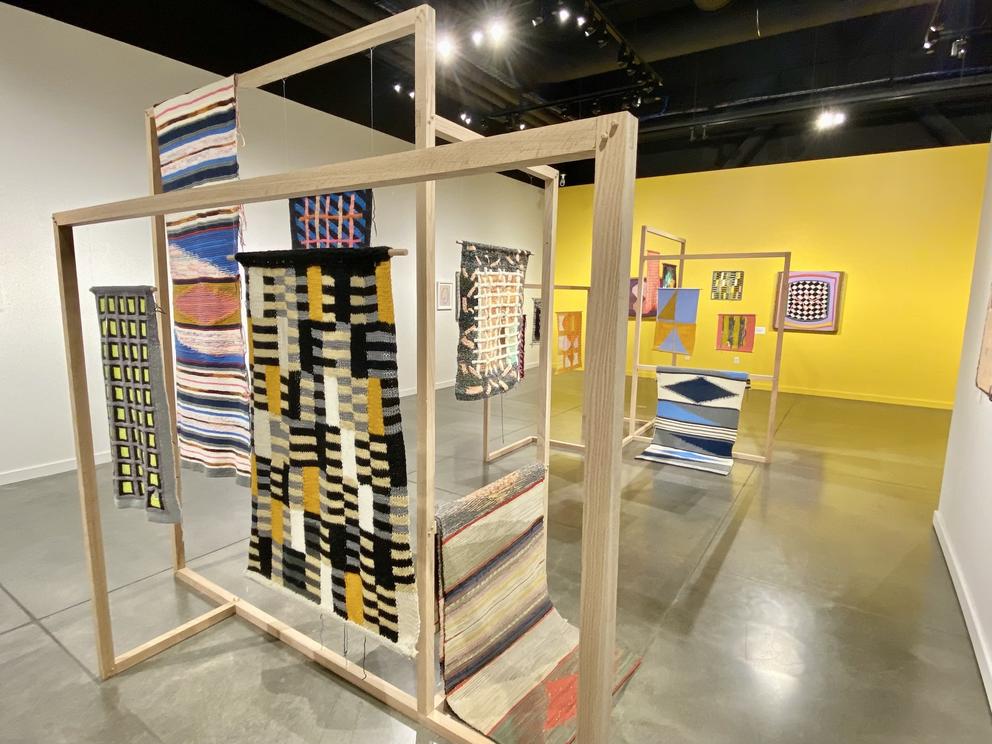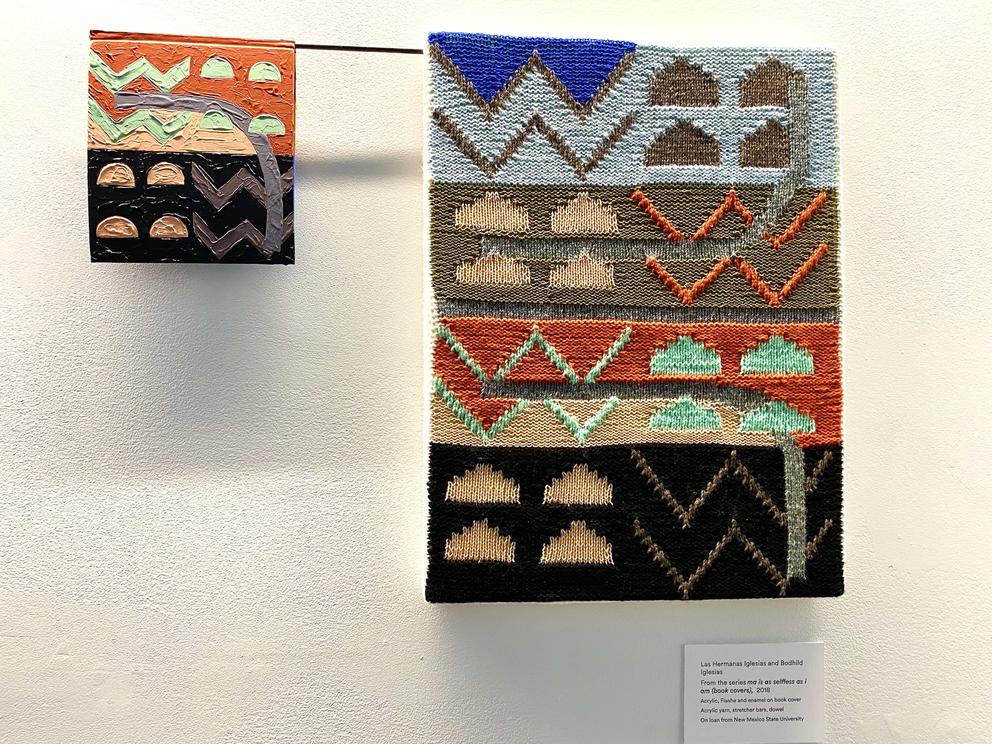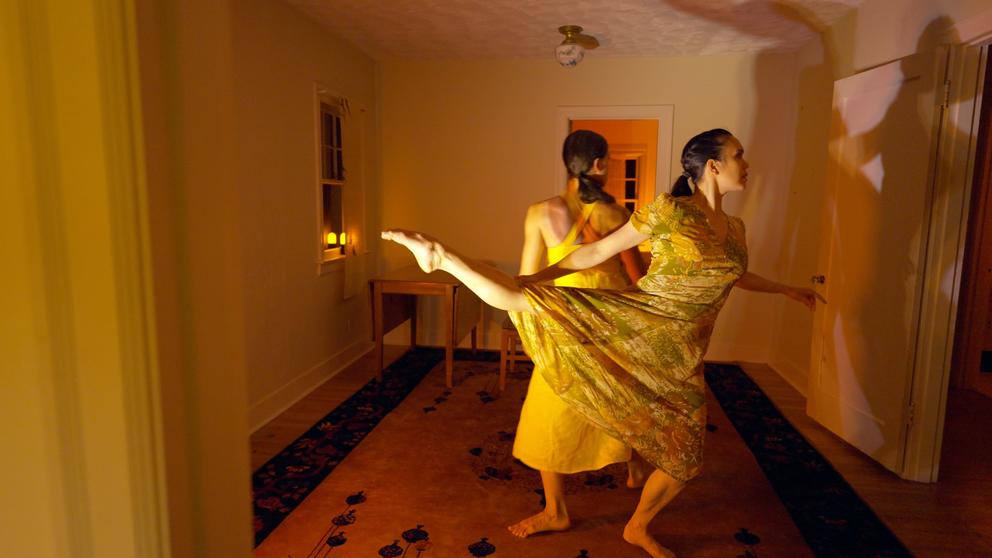Pinned to a gallery wall at Bellevue Arts Museum, the dark-brown peach pit is one of 800-some bagged artifacts — arranged floor to ceiling — that constitute the installation Everyday Artifacts: Working Class Waste from 1890s Seattle, which is part of the juried group show BAM Biennial: Architecture & Urban Design (through April 24, 2022).
ArtSEA: Notes on Northwest Culture is Crosscut’s weekly arts & culture newsletter.
This fascinating array of antique cast-offs — pharmacy bottles, worn-out shoes, broken plates, porcelain doll parts, antlers, clothespins, dinner bones — was discovered in an 11-foot-deep well unearthed during the 2018 excavation of the Washington State Convention Center expansion. Previously used as a garbage chute, the well had been sealed off since the turn of the 19th century.
This display of ephemera deemed unworthy of the National Historic Register was curated by Northwest artist Kate Clark, who says her work is propelled by the idea that “the world is a living museum, and we are its interpreters.” Clark directs a collaborative project called Parkeology (motto: In Dust We Trust), which is currently creating a 30-foot-long artwork using some of the salvaged objects. Once installed in the new convention center, the final piece will bring the deep history of the downtown site’s denizens up from underground and on view for future passersby.
The BAM Biennial features several other compelling works: Northwest multimedia artist Dave Kennedy brings a bricked-up building to life with collaged photographs in “Everything That Remains”; Redmond artist Angie Hinojos contributes a glimmering Mayan temple that tells ancestral stories with contemporary graphic imagery in “The Dialect of the Heart”; Leviathan, photographer Eirik Johnson’s striking series of close-range photographs, reveals the ominous architecture that emerges when massive shipping vessels are viewed from water level; and Portland brothers Santigie and Sapata Fofana-Dura have crafted a towering black structure of salvaged timber and discarded construction materials, which smells of charred wood and seems torn from a foreboding fairy-tale forest.
But it was the little veined peach pit (found in Lot 12, tagged as “botanical”) that really transported me — immediately, I pictured someone standing on that block 130 years ago, pausing to relish the last sticky sweetness of the fruit, then spitting out the stone, never giving it another thought.
Generational timelines knit together in a new show at the National Nordic Museum, as well. M(other) Tongues: Bodhild and Las Hermanas Iglesias (through Jan. 31, 2022) features the textile work of Norwegian artist Bodhild Brendryen Iglesias and her daughters Janelle and Lisa (the “Iglesias sisters,” whose father is Dominican). Mother and daughters collaborate on paintings, weavings and knit tapestries, some inspired by Bodhild’s own mother’s rag rugs. The audio tour of the show continues the artistic timeline, as Bodhild’s grandson, Bowie, narrates.
Using a “call and response” approach, one family member paints an abstract design, which the others recreate as knitted wall hangings (pairings that recall the work of influential Bauhaus textile artist Anni Albers). Both the paintings and the knittings are included in the show, which sparks an engaging “spot the difference” visual game that reveals the particular beauty of each medium.
The exhibit starts in the grand hall of the museum, where Tróndur Patursson’s glass seabirds soar overhead, and continues into the last gallery on the left, with the paintings on the walls and the corresponding textiles suspended from an architectural showcase in the middle of the room.
As someone who has tried knitting (and failed miserably), I find more kinship with these nubby and imperfect textiles than with exquisite and elaborately patterned woven works. With stretchy organic shapes, surprising hues dancing next to each other and unexpected holes, these tender tapestries feel like family dynamics made visible.
The fabric of family is made palpable again in a world premiere piece by the Seattle Dance Collective (led by artistic directors and Pacific Northwest Ballet dancers Noelani Pantastico and James Yoichi Moore), released online today and available for streaming Nov. 11-21. Choreographed by Robyn Mineko Williams, the short video “Where You Stay” was filmed on Vashon Island, on the historic grounds of the Mukai Farm & Garden (where you, too, can visit and dance among the Japanese gardens).
Listed on the National Register of Historic Places, the lovely Craftsman house and grounds are where, in 1923, B.D. Mukai started what became a thriving strawberry farm, which his son, Masa, took over in 1934. When Executive Order 9066 came down in 1942, Masa and his wife and son fled to an area in Oregon outside the “exclusion zone” to escape internment. They were able to return to the business after World War II.
Without addressing this history directly, “Where You Stay” places six dancers inside and around the house, in an antique-yellow-hued dreamscape in which timelines are blurry but the resonance is clear. Dressed in street clothes that might be seen across eras, the dancers turn and bend but seem stuck in this location, like ghosts or broken birds.
Watching feels like those dreams of walking through a house in which you wonder, did I live here? Have I always lived here? Somehow, you know your way around the architecture. Generational threads stretch across time and space, as dancer James Yoichi Moore haunts a young boy (choreographer Williams’ son Knox) who might be his younger self, his son or his grandfather.
Also on the world premiere bill, called Here & Now, are two short films directed by Bruno Roque. “5 Favorite Things,” choreographed by FLOCK (Alice Klock and Florian Lochner), features six dancers — sporting lockdown-chic soft pants — who move amoebalike across a black stage in solos, duets and full ensemble, as the camera tracks closely in one continuous shot. And in “To Dust,” choreographed by Juliano Nunes, the FLOCK duo embraces and intertwines in a raw gray backstage space. As the soundtrack clacks like a moving train, the implication is time pushing forward, a last dance ending but the music playing on.
Get the latest in local arts and culture
This weekly newsletter brings arts news and cultural events straight to your inbox.

